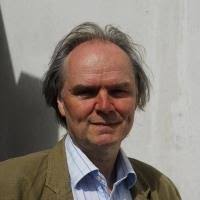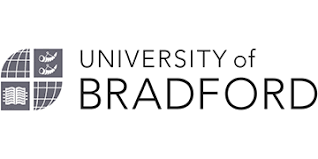Day 1 :
- Cancer
Session Introduction
Jianhua Luo
University of Pittsburgh
Title: Fusion genes and their role in human cancers

Biography:
Dr. Luo has been studying molecular pathology related to human malignancies in the last 30 years. Currently, he is a Professor of Pathology and Director of High Throughput Genome Center at University of Pittsburgh. In the last 17 years, Dr. Luo has been largely focusing on the genetic and molecular mechanism of human prostate and hepatocellular carcinomas. In this period, his group has identified and characterized several genes that are related to prostate cancer and hepatocellular carcinoma, including SAPC, myopodin, CSR1, GPx3, ITGA7, MCM7, MCM8, MT1h and GPC3. He has characterized several signaling pathways that play critical role in prostate cancer development, including Myopodin-ILK-MCM7 inhibitory signaling, myopodin-zyxin motility inhibition pathway, CSR1-CPSF3, CSR1-SF3A3 and CSR1-XIAP apoptotic pathways, MT1h-EHMT1 epigenomic signaling, ITGA7-HtrA2 tumor suppression pathway, GPx3-PIG3 cell death pathway, AR-MCM7, MCM7-SF3B3 and MCM8-cyclin D1 oncogenic pathways. He proposed prostate cancer field effect in 2002. He is one of the pioneers in utilizing high throughput gene expression and genome analyses to analyze field effects in prostate cancer and liver cancer. He is also the first in using methylation array and whole genome methylation sequencing to analyze prostate cancer. Recently, his group discovered several novel fusion transcripts and their association with aggressive prostate cancer. One of the fusion genes called MAN2A1-FER, was found present in 6 different types of human cancers. He later defined a critical MAN2A1-FER/EGFR signaling pathway that is essential for MAN2A1-FER mediated transformation activity. His group also developed a genome intervention strategy targeting at the chromosomal breakpoint of fusion gene to treat cancers. Overall, these findings advance our understanding of how cancer develops and behaves, and lay down the foundation for better future diagnosis and treatment of human malignancies.
Abstract:
Chromosome changes are one of the hallmarks of human malignancies. Chromosomal rearrangement is frequent in human cancers. One of the consequences of chromosomal rearrangement is gene fusions in the cancer genome. We have previously identified a panel of fusion genes in aggressive prostate cancers. In the present study, we found that these fusion genes are present in 7 different types of human malignancies with variable frequencies. Among them, the CCNH-C5orf30 and TRMT11-GRIK2 gene fusions were found in breast cancer, colon cancer, non-small cell lung cancer, esophageal adenocarcinoma, glioblastoma multiforme, ovarian cancer, and liver cancer, with frequencies ranging from 12.9% to 85%. In contrast, four other gene fusions (mTOR-TP53BP1, TMEM135-CCDC67, KDM4-AC011523.2, and LRRC59-FLJ60017) are less frequent. Both TRMT11-GRIK2 and CCNH-C5orf30 are also frequently present in lymph node metastatic cancer samples from the breast, colon, and ovary. Thus, detecting these fusion transcripts may have significant biological and clinical implications in cancer patient management. One of these fusion genes called MAN2A1-FER generated a constitutively activated tyrosine protein kinase. The fusion translocates FER kinase from the cytoplasm to Golgi apparatus. The fusion protein ectopically phosphorylates the N-terminal domain of EGFR and activates the EGFR signaling pathway in the absence of a ligand. MAN2A1-FER has been found in a variety of human malignancies. It transforms immortalized cell lines into highly aggressive cancer cells. Expression of MAN2A1-FER produces spontaneous liver cancer in animals. Cancer cells positive for MAN2A1-FER are highly sensitive to several tyrosine kinase inhibitors and can be targeted by genome therapy intervention. Thus, targeting at MAN2A1-FER or other oncogenic fusion genes may hold promise to treat human cancer effectively. To develop a cancer genome specific targeting strategy, we used Cas9-based genome editing to introduce the gene for the pro-drug converting enzyme ‘herpes simplex virus type 1 thymidine kinase (HSV1-TK) into the genome of cancer cells that carry unique sequences resulting from genome rearrangements. Specifically, we targeted the breakpoints of TMEM135-CCDC67 and MAN2A1-FER fusions in human prostate cancer or hepatocellular carcinoma cells in vitro and in mouse xenografts. We designed one adenovirus to deliver the nickase Cas9D10A and gRNAs targeting the breakpoint sequences and another to deliver an EGFP-HSV1-TK construct flanked by sequences homologous to those surrounding the breakpoint. Infection with both viruses resulted in breakpoint-dependent expression of EGFP-TK and ganciclovir-mediated apoptosis. When mouse xenografts were treated with adenoviruses and ganciclovir, all animals showed a reduction of tumor burden with no mortality over the observation period. Our results suggest that Cas9-mediated suicide gene insertion might be a viable genotype-specific therapy for cancer.
Diana Anderson
University of Bradford
Title: Improving Cancer Diagnostics using an empirical assay for assessing Genomic Sensitivity

Biography:
Diana Anderson holds the Established Chair in Biomedical Sciences at the University of Bradford. She has 450+ peer-reviewed papers, nine books, has successfully supervised 29 Ph.D.’s, and has been a Member of Editorial Boards of 10 international journals. She has been or is Editor in Chief of a book series on toxicology for J Wiley and Sons and the Royal Society of Chemistry respectively. She gives keynote addresses at various international meetings. She is a Consultant for many international organizations, such as the WHO, NATO, TWAS, UNIDO and the OECD. Her h index =54.
Abstract:
Detection tests have been developed for many cancers, but there is no single test to identify cancer in general. We have developed such an assay. In this modified patented Comet assay, we investigated peripheral lymphocytes of 208 individuals: 20 melanoma, 34 colon cancer, 4 lung cancer patients, 18 suspect melanoma, 28 polyposis, 10 COPD patients and 94 healthy volunteers. The natural logarithm of the Olive tail moment was plotted for exposure to UVA through different agar depths for each of the above groups and analyzed using a repeated measures regression model. Response patterns for cancer patients formed a plateau after treating with UVA where intensity varied with different agar depths. In comparison, response patterns for healthy individuals returned towards control values and for pre/suspected cancers were intermediate with less of a plateau. All cancers tested, exhibited comparable responses. Analyses of receiver operating characteristic curves, of mean log Olive tail moments, for all cancers plus pre/suspected-cancer versus controls gave a value for the area under the curve of 0.87; for cancer versus pre/suspected-cancer plus controls the value was 0.89; and for cancer alone versus controls alone (excluding pre/suspected-cancer), the value was 0.93. By varying the threshold for test positivity, its sensitivity or specificity can approach 100% whilst maintaining acceptable complementary measures. Evidence presented indicates that this modified assay shows promise as both a stand-alone test and as a possible adjunct to other investigative procedures, as part of detection programmes for a range of cancers

Biography:
Andrei L. Gartel, Ph.D., is an Associate Professor in the Department of Medicine at the University of Illinois at Chicago and is the Academic Editor of PLOS ONE. He is the author of 92 peer-review publications that include more than 20 reviews. He has more than 14,000 citations and his h-index 41. Earlier, his major contribution to the field was a discovery that c-Myc negatively regulates transcription of the CDK inhibitor p21 via interaction with transcription factors Sp1/Sp3 (more than 400 citations). In addition, his laboratory discovered the presence of alternate p21 transcripts that are strongly regulated by p53 in human and mouse cells. We found a positive auto-regulation loop of the oncogenic transcription factor FOXM1 and negative regulation of FOXM1 by tumor suppressor p53. His lab also found a positive auto-regulation loop of the oncogenic transcription factor FOXM1 and negative regulation of FOXM1 by tumor suppressor p53. He received his funding from NIH, DOD and private companies/foundations.
Abstract:
FOXM1 is an oncogenic transcription factor that is overexpressed in the majority of human cancers and it is a potential target for anticancer drugs. We identified proteasome inhibitors as the first type of drugs that target FOXM1 in cancer cells. Moreover, we found that HSP90 inhibitor PF-4942847 that does not act as proteasome inhibitor also suppresses FOXM1. Chaperone HSP70 is induced after treatment with both proteasome/HSP90 inhibitors and after heat-shock stress and we identified this chaperone as a novel negative regulator of FOXM1 after proteotoxic stress. We showed that FOXM1 and HSP70 interact in cancer cells following proteotoxic stress and FOXM1/HSP70 interaction led to inhibition of FOXM1. Honokiol is a natural product and an emerging drug for a wide variety of malignancies, including hematopoietic malignancies, sarcomas, and common epithelial tumors. Here we found that honokiol inhibits FOXM1-mediated transcription and FOXM1 protein expression. More importantly, we found that honokiol’s inhibitory effect on FOXM1 is a result of direct binding of honokiol to FOXM1. This binding is specific to honokiol, a dimerized allylphenol, and was not observed in compounds that either were monomeric allylphenol or un-substituted dihydroxy phenols. This indicates that both substitution and dimerization of allylphenol are required for physical interaction with FOXM1. We have previously shown that FOXM1 interacts with nucleophosmin (NPM) in cancer cells and NPM determines the cellular localization of FOXM1. Mutations in NPM1 result in cytoplasmic re-localization of NPM (NPM1mut) and favorable outcome for the patients. We found the evidence that improved outcomes in the subset of NPM1mut AML may be partially explained by the cytoplasmic re-localization and consequent functional inactivation of FOXM1. First, we confirmed the co-localization of FOXM1 and NPMmut in the cytoplasm of AML patients bone marrow biopsies and determined a strong cytoplasmic expression of FOXM1 only in NPM1mut AML cells. We also showed an important role of FOXM1 in chemo-resistance in leukemia cell lines with nuclear, but not cytoplasmic FOXM1. These data imply that suppressing of FOXM1 in AML could increase sensitivity to standard chemotherapy, while overexpression of FOXM1 would increase chemo-resistance of AML cells. We developed novel drugs that inhibit the interaction between NPM and FOXM1 and FOXM1 expression in human cancer cells and potentially may be used against human cancer.

Biography:
Magnus S Magnusson, Research Professor Ph.D. in 1983, University of Copenhagen. He is the author of the T-pattern and the T-system model, initially focused on the real-time organization of behavior, that forms the basis of his corresponding dedicated pattern detection software THEMEtm. Has co-directed a two year DNA analysis project. Published numerous papers and given invited talks and keynotes at international mathematical, neuroscience, proteomics, A.I., bioinformatics and science of religion conferences and at leading universities in Europe, USA, and Japan. Deputy Director 1983-1988, Anthropology, National Museum of Natural History, Paris. Then repeatedly invited temporary university Professor in psychology and ethology (biology of behavior) at the University of Paris (V, VIII & XIII). Since 1991, Founder and Director of the Human Behavior Laboratory, University of Iceland. Works in formalized collaboration between now 32 European and American universities based on “Magnusson’s analytical model” initiated at University René Descartes Paris V, Sorbonne, in 1995.
Abstract:
Spatial and temporal self-similarity across more than nine orders of magnitude, based on the self-similar fractal-like pattern, called T-pattern, and giant durable T-patterned stringomes (molecular or textual) are the main focus here. The T-pattern being a natural or pseudo-fractal pattern, recurring with statistically significant translation symmetry (Magnusson et. al. eds. 2016). The T-pattern, the core of the T-system of structural concepts is a result of an ethological (i.e. biology of behavior) project started in the early 1970’s primarily on social interaction and organization in social insects and primates including humans inspired mainly by the ethological work of Lorenz, von Frisch and Tinbergen for which they shared a Nobel Prize in Medicine or Physiology in 1973. Notably, in this context, their smallest subjects were social insects and thus no consideration of self-similarity. The present project has focused on developing time pattern definitions with corresponding detection algorithms resulting in the T-pattern type and the dedicated THEME software, which has allowed their abundant detection in many kinds of animal and human behavior and interactions and later in neuronal interactions within living brains (Nicol et. al.), thus showing T-patterned self-similarity of temporal interaction between and within brains. After the RNA world invented its external memory as purely informational giant T-patterned DNA strings there is only the DNA world. Then humans invented their external memory as purely informational T-patterned strings, or T-strings, of written language or texts that in a biological eye-blink, have allowed explosive development science and technology and extremely populous and complex human mass-societies, which are the only large-brained mass-societies and the recent discoveries of proteins as the nano citizens of cells (cell cities). Protein and human mass-societies seem to be the only ones using such giant T-strings external to and far more durable than their variously specialized citizens create them using various segments of their T-patterned stringomes a method not found in other mass societies such as social insect societies. Temporal and spatial self-similar patterning from nano to human scales suggest T-patterns and T-patterned stringomes as important biological organizers.
Yoshiaki Omura
New York Medical College
Title: Cancer Can Develop Very Rapidly When Strong Infections of Human Papillomavirus Type 16 & Human Herpes Virus Type 8 & Strong Electromagnetic Field Coexist. These Cancers Are Infectious and Hard to Treat: New Method of Effectively Reducing Cancer Parameters and Complete Inhibition of Cancer Activity
Biography:
Yoshiaki Omura received Oncological Residency training at Cancer Institute of Columbia University & Doctor of Science Degree through research on Pharmaco-Electro-Physiology of Single Cardiac Cells in-vivo and in-vitro from Columbia University. He researched EMF Resonance phenomenon between 2 identical molecules for non-invasive detection of various molecules & various cancers, at Graduate Experimental Physics Dept., Columbia University, for which he received US Patent “Bi-Digital O-Ring Test for non-invasive diagnosis & treatment”. He published over 290 original research articles, many chapters, & 9 books. He is currently Adjunct Professor of Family & Community Medicine, New York Medical College; President & Professor of International College of Acupuncture & Electro-Therapeutics, NY; Editor in Chief, Acupuncture & Electro-Therapeutics Research, International Journal of Integrative Medicine. Formerly, he was Director of Medical Research for Heart Disease Research Foundation and he was also Adjunct Professor or Visiting Professor in Universities in USA, France, Italy, Ukraine, Japan, Korea, & China.
Abstract:
Our research indicated the optimal dose of vitamin D3 has 10 unique beneficial effects including very significant anti-cancer effects and urinary excretion of bacteria, viruses, and fungus. Cancer can develop rapidly in the coexistence of strong infection of human papillomavirus type 16 and human herpes virus type 8 and strong electromagnetic field. Such cancer was found to be infectious and difficult to treat. Using the single medication of optimal dose of vitamin D3 used continuously with proper intervals we found that the amount of viral infection is reduced to a much smaller amount and when the amount of the infection significantly reduces, the cancer is no longer infectious. The optimal dose of vitamin D3 continuously used every 6-8 hours can prevent worsening of cancer and it is the safest and most effective medication for not only cancer but many other medical problems since every cell requires an optimal dose of vitamin D3, and it does not cause side effects. Since we found white-fleshed Dragon fruit contains a significant amount of DHEA, optimal dose of which also has excellent anti-cancer effect and contains a relatively large amount of Zinc which is known to reduce DNA instability, we combined optimal dose of vitamin D3 and optimal dose of white-fleshed Dragon fruit and found cancer markers can reach extremely low value compared with using each medication independently. Using this method we were able to inhibit cancer activity very significantly. We found taking vitamin D3 every 6-8 hours and white-fleshed Dragon fruit at optimal intervals of every 24-30 hours to be the most effective way of reducing cancer markers. Meanwhile, the author succeeded in completely stopping cancer activity for a prolonged duration of time, by giving the following 2 additional methods: (1) selective drug uptake enhancement method by stimulation of organ representation area of hand corresponding to pathological organ, (2) stimulation of newly discovered Thymus Gland Representation Areas on the back of the hands, at a rectangular space at the middle of the knuckle joint of the middle finger and extending in a small rectangle toward the wrist down the back of each hand. This treatment was first successful on December 8, 2018, and we have tested 25 cancer patients. Patients were then instructed to perform Manual Stimulation of the newly-discovered Thymus Gland Representation Area of each hand (or each foot). More than 85% of patients succeeded in stopping cancer activity after more than one hour’s manual stimulation effort. For those who could not get complete inhibition of cancer activity, the author developed a few different methods of rapidly inducing the inhibition of cancer activity including solar energy stored paper.


